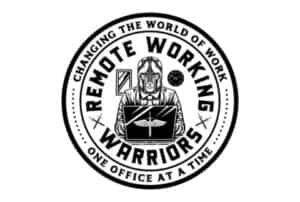This website is supported by its readers. If you click one of my links I may earn a commission. I am also a participant in the Amazon affiliates programme and I will also earn a commission from qualified purchases.
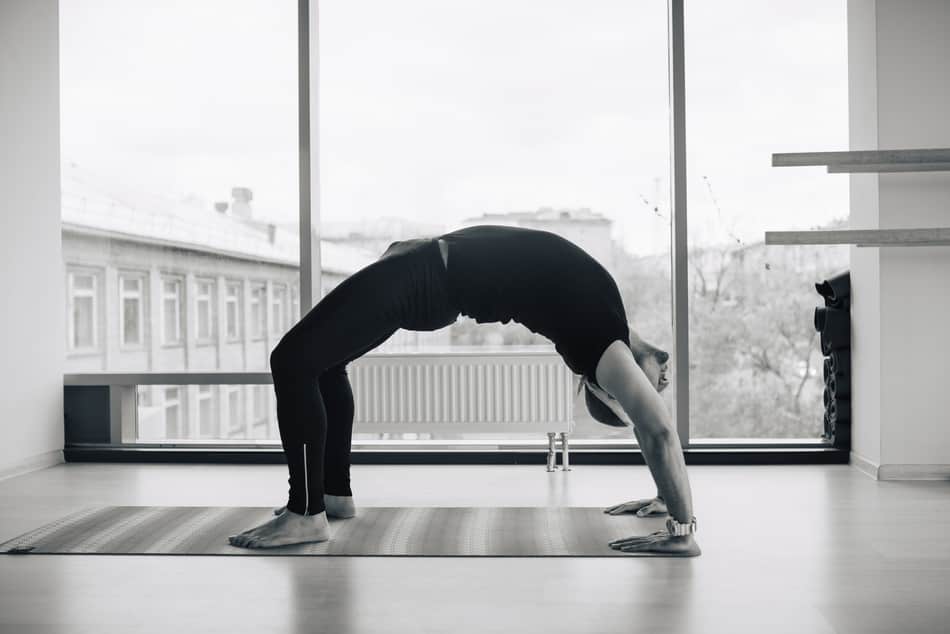
Right now you’re probably reading this at work, your butt has been sitting in the same seat 8 hours a day, 40 hours per week, your head hunched over eyes glaring at a screen…. Sounds painful. Stretching is one of the most important things you can do to reduce inflexibility, tiredness and improve blood flow.
Stretching when you work remotely/from your own office has its own set of complexities. So what are the best stretches you can do from your home? How long should you stretch for?
Keep reading to find out more
(Just a heads up a lot of people reading my blog are in the process of designing their own home office. If you want to save some of the painstaking time I did in designing my office, you can find my recommended products here)
Have a designated space to stretch out
Perfect if you have a home office (like this blog is designed for) if you have a designated space to stretch out that isn’t a bedroom or living room, you’re much more likely to build the habit of doing this every day.
The good news about having your own home office is that you can use a lot of the equipment you already have to do these stretches ( chair, table heck even a Yoga mat)
Have a set time every day to stretch out
Again, this is all about building the routine of stretching. I personally like to stretch out in the morning not only for the benefits but because once I’ve done it, it’s out of the way and opens your body up for spending the rest of the day in front of a desk.
Follow the same routine everyday
Okay so you might be thinking of a routine for stretching?really?
Truth be told the first few times you stretch from home you’re going to find it a little bit painful and sore.
As such it’s best to stick to one routine that you can do every day and get progressively better at.
Progressive overload is a real thing when it comes to building muscle and the same concept can be used when it comes to stretching.
Ensure your stretch out every body part
So it might be very tempting to stretch out just your favourite part of your body but it’s important that you stretch out all parts of your body.
There’s no point in stretching out your legs when realistically your neck takes a lot of the pressure when you’re staring at screens for 10 hours straight.
Stretching when you work remotely/from your own office has its own set of complexities. So what are the best stretches you can do from your home? How long should you stretch for?
What are the best stretches to do when working remotely
Let’s face it, you’re most likely reading this blog post not for theory but for some active stretches you can do right now.
So I’ve found a fair few pics of these stretches but for any that I found were quite poor I decided to do you all a favour and do the stretches ( wish me luck)
Let’s break them down.
Neck & Shoulders
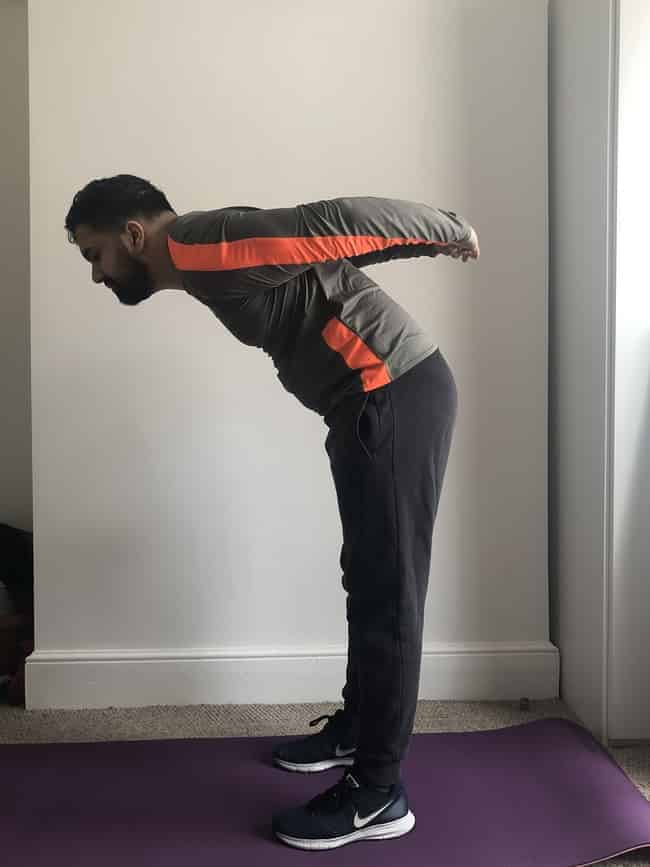
How to do it: Lean forward and stretch your arms behind your back, interlocking your fingers while lifting your arms.
What is this good for: great for stretching out your spine and loosening up your shoulders
Back of the legs
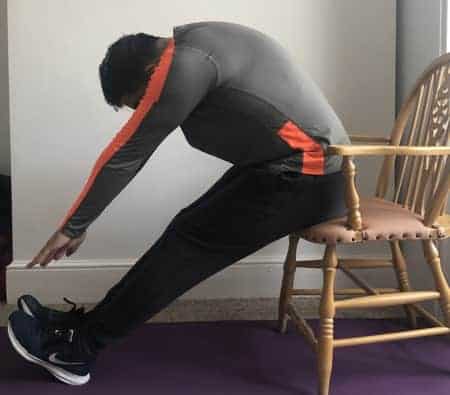
How to do it: Elongate your legs and bend slowly forward whilst aiming for your legs
What is this good for: great for stretching out your hamstrings and getting blood flow back into your legs.
Wrist Stretch
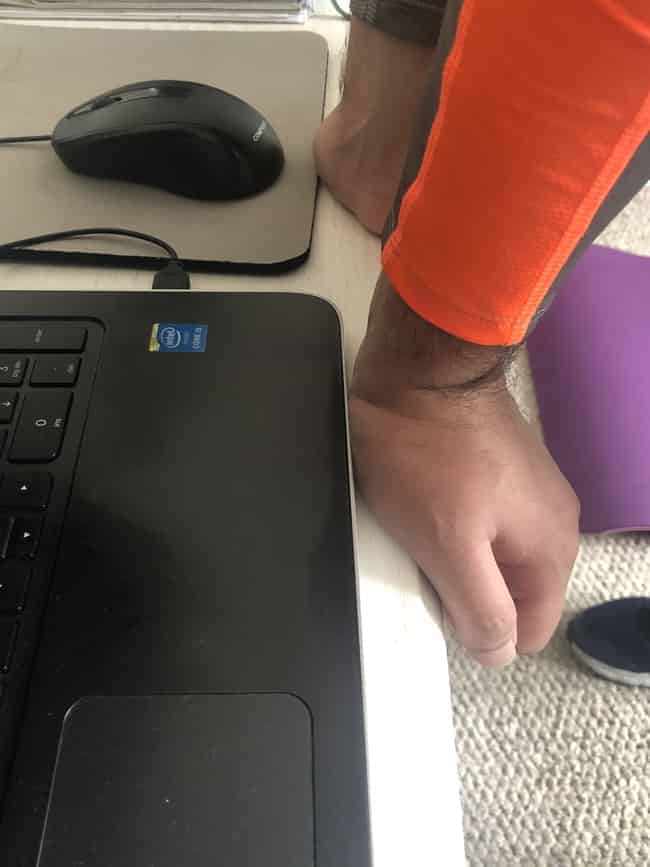
How to do it: Stretch your hands on your desk facing away from you to open up your wrists
What is this good for: great for opening up your wrists especially for those of you who type a lot.
Wrist Circle
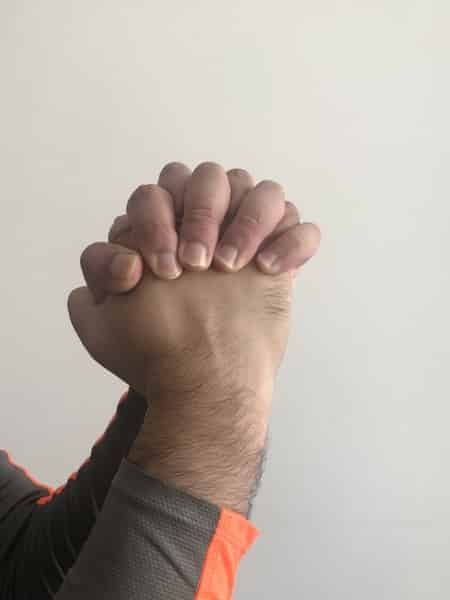
How to do it: clasp one hand in front of the other and slowly rotate your hands
What is this good for: great for opening up your wrists especially for those of you who type a lot.
Shoulder Shrug
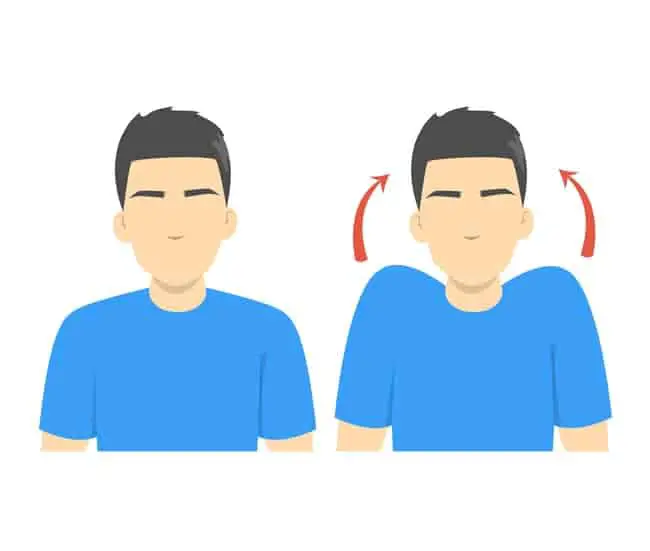
How to do it: Simply keep your shoulders straight, lift them up towards your ears vertically, hold for 1-2 seconds and let them fall slowly. Hold for repeat upto 10 reps.
What is this good for: great for loosening up your traps when you need to have been hunched over.
Overhead Stretch
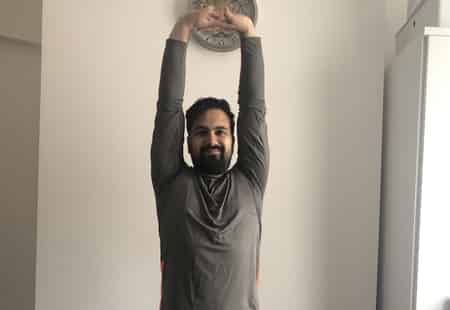
How to do it: raise your hands above your head, interlock your fingers and push away.
What is this good for: great for opening up your shoulders and chest,
Single Leg Squat
How to do it: Stand on one leg with your other leg slightly out, slowly lower yourself into a seated squat position.
What is this good for: great for stretching out your legs and get blood flow back into your body.
Standing Squats

How to do it: Stand with your legs shoulder apart, flat footed and gently squat until your butt is almost on the floor. Hold and standing back up
What is this good for: great for stretching out your legs and getting blood flow back into your body.
Low Lunges
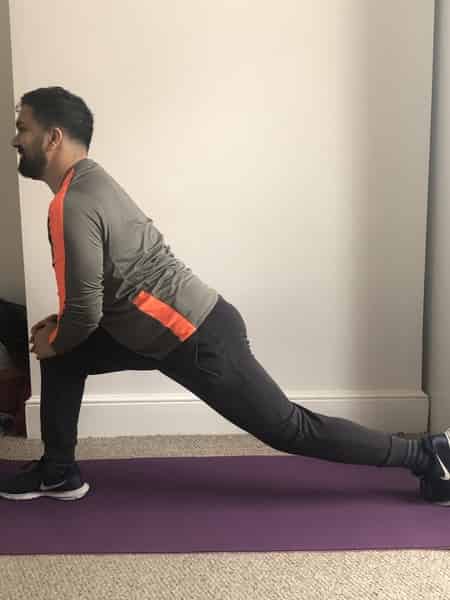
How to do it: Keep your front leg at a 90 degree angle. Stretch your rear leg out with it slightly on the floor. Lean forward slightly to feel the stretch. Hold for 5-10 seconds.
What is this good for: great for your hamstrings, which should help when walking around the office.
Stress ball squeeze

How to do it: just squeeze your stress balls every few seconds
What is this good for: great for just de-stressing and even giving your forearms a bit of a workout.
My favourite stress ball is the SuperShuk stress ball
Facepull
How to do it: get yourself a stretch band, attach it to the top of a door and bring the band to your eyes.
What is this good for: great for opening up your upper back/traps and helping avoid hunching forward.
My favorite exercise bands bands are tribes 11 piece set
Quad Stretch
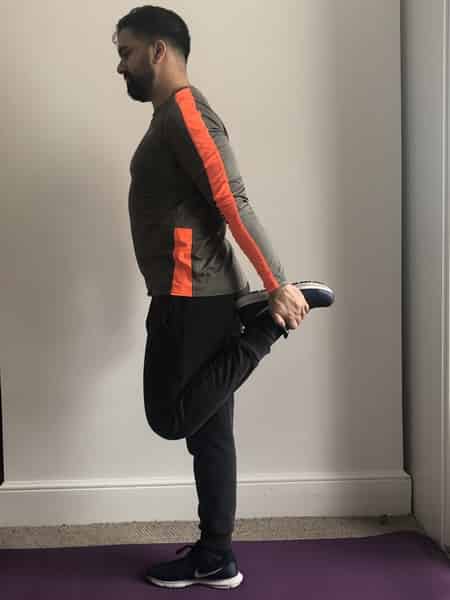
How to do it: Keep one leg on the floor, lift your other leg and foot towards your butt and hold for 10 seconds, repeat with the other leg.
What is this good for: great for stretching out your quads.
Tricep stretch
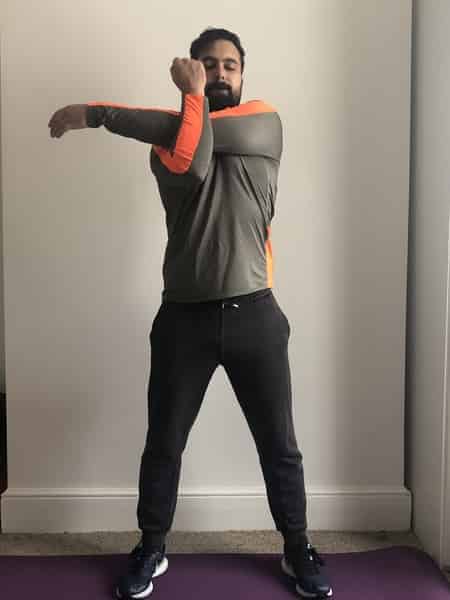
How to do it: Interlock your arms with one another and stretch until you can feel your shoulder pulling. Then switch and repeat with the other arm. Hold for 8-10 seconds.
What is this good for: Great for stretching out your triceps and getting blood in your arms when you need to type.
Forward Bend
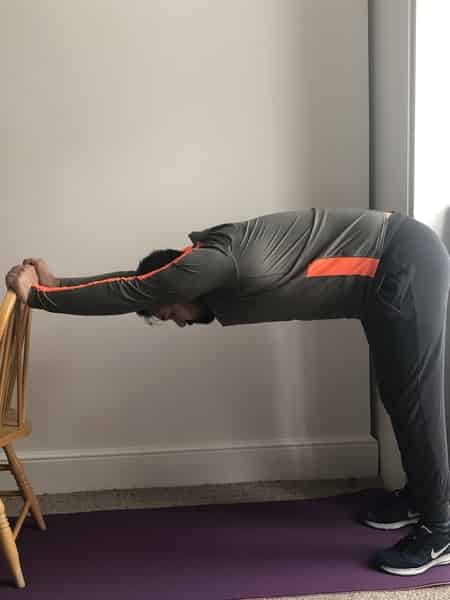
How to do it: Holding onto a desk or chair, keep your legs shoulder width apart and reach out with your hands in front of your head looking up. Hold for 10-20 seconds
What is this good for: Great for stretching out the back of your legs, your arms and your back. An all rounder!
Arm Twist
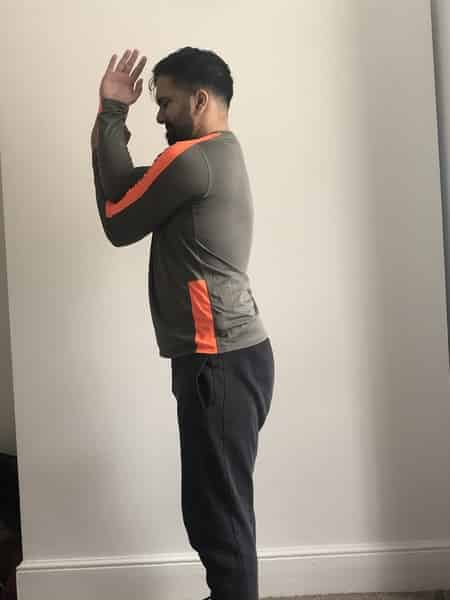
How to do it: Interlock one arm with the other with your palms facing inwards. Your elbow should be on the inside of your other arm. Hold for 10 seconds and then repeat with the other arm.
What is this good for: Great for stretching out your arms and upper arms which you might leaning on when listening to boarding meetings
Spinal Twist
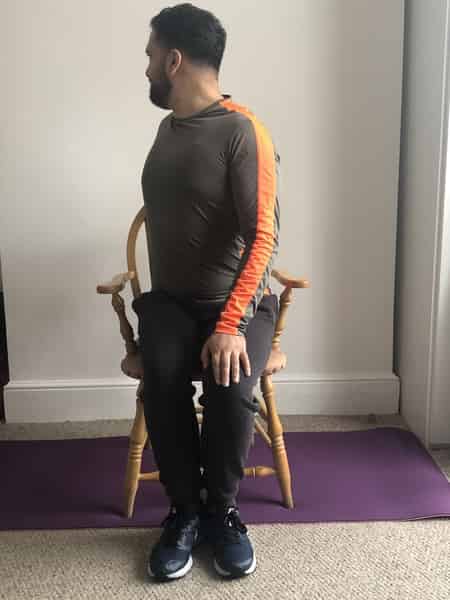
How to do it: Whilst sitting on a chair with your feet flat on the floor, contract your abs and slowly twist yourself to the right, hold for 10 seconds and then twist to the left.
What is this good for: really good for alleviating any pain that might have been built up over the day whilst sitting down.
Standing Leg Raises
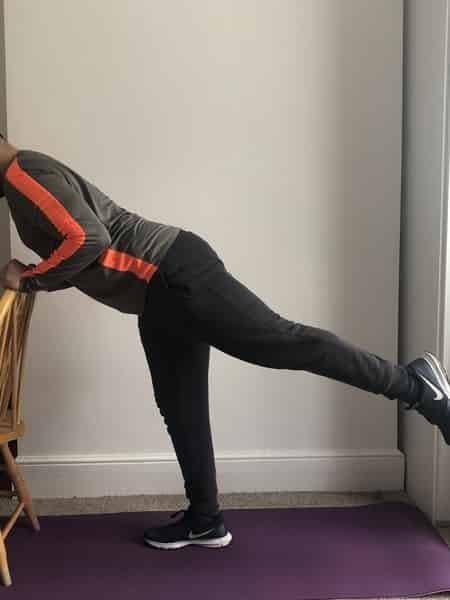
How to do it: With your chair in front of you, lean forward with your weight balanced on your hands and on your front leg. Stretch out your back leg and lean forward with your front leg.
What is this good for: Great for stretching out your legs.
Chair neck stretch
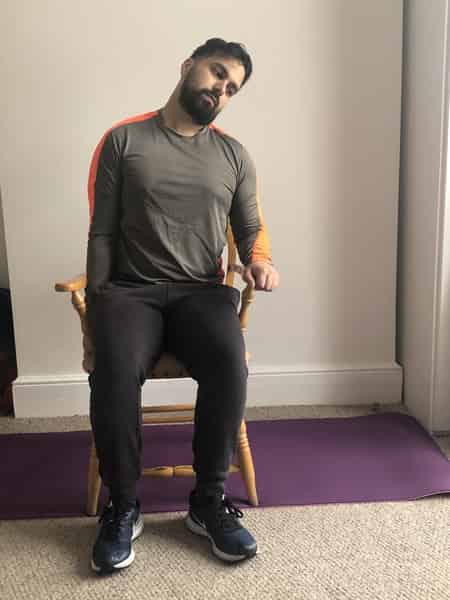
How to do it: Whilst sitting on a chair reach one of your arms under the chair and tilt your neck to the left hold for 30 seconds and then do it to the right.
What is this good for: really good for opening up your neck when you’ve been staring at your screen the whole day.
Seated hip stretch

How to do it: Whilst sitting on a chair lift one of your legs on the top of your knee and lean forward with your head down whilst your other foot is lying flat on the floor.
What is this good for: great for your hip flexors which unfortunately very rarely get worked throughout the day.
Inner thigh Stretch
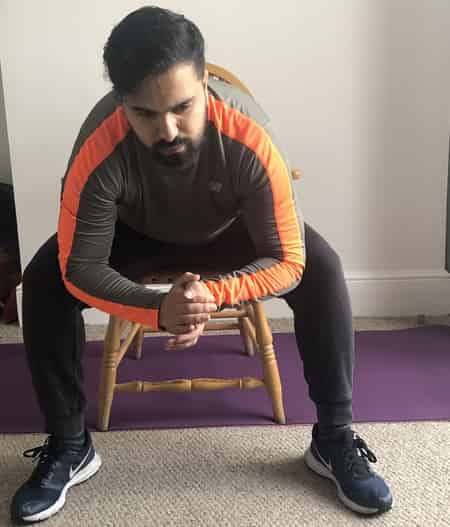
How to do it: Keep your legs open quite widely, lean forward and push your elbows on the inside of your legs.
What is this good for: great for opening up your hips, thighs and groin which might need more stretching out then your might think.
Seated shoulder squeeze
How to do it: Sit on the floor with your hands and knees bent flat on the floor. Clasp your hands behind your back and stretch out for 10 – 15 seconds.
What is this good for: great for opening up your back and shoulders and chest.
Knees to chest

How to do it: Lie on your back with your knees pointing towards your chest with both hands and hold for about 1 minute
What is this good for: Great for stretching out your lower back.
So now you have an idea of what some good stretches looks like, let’s answer some of the common FAQs that come with stretching when you work remotely.
FAQs with home stretching
A couple of quick questions that I’ve come across that relate to Stretching at home:
Why is it important to stretch when working form home?
You will be in front of a screen for long periods of time, as a minimum for about 8 hours.
According to Harvard Stretching keeps the muscles flexible, strong, and healthy,
What areas of your body are the most important to stretch out every day?
Again according to Harvard health, the most important crucial for stretching are your lower extremities: your calves, your hamstrings, your hip flexors in the pelvis and quadriceps in the front of the thigh
How long should it take you to get good at stretching?
In about 20-30 days you should be able to see a significant increase in your flexibility, meaning you will become better at stretching overall.
Now hopefully you’ve found the post to be useful. One of the things people often need to consider when they are stretching when working remotely or even from a home office is where they are going to put it. Lucky for you I’ve written a post talking all about the best room for a home office here.
Finally a lot of people reading my blog want to know what products I recommend for a home office/remote working. You can find out my recommendations here and learn how I make money whilst working remotely on the side here.
The content on this on this site has been written by Fehed Nicass who has over a decades worth of experience in sales and has worked remotely for the past 2 years.
